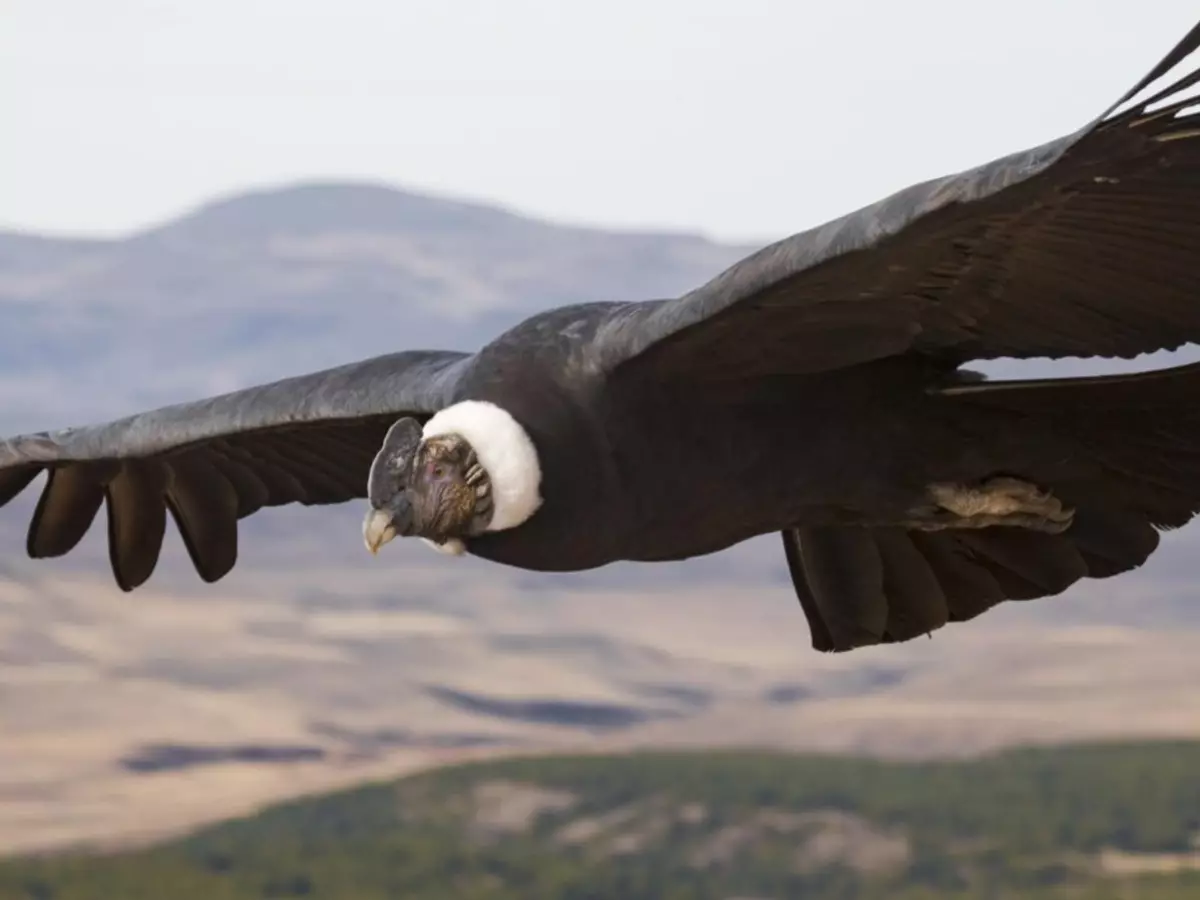World's Heaviest Soaring Bird, The Andean Condor, Can Fly Without Flapping Its Wings For 160 Km
The Andean condor has a wingspan of up to 10 feet and can weigh 10 kg or more. Scientists recorded the wing beat of eight condors using a device they called daily diaries. They observed over 250 hours of flight time and found the birds spent just 1 per cent of their time aloft flapping their wings.

The world's largest soaring bird can fly for hours without flapping its wings, a new study has revealed. The Andean condor has a wingspan of up to 10 feet and can weigh 10 kg or more making it the world's heaviest flying birds.
For a bird this heavy, the energetic costs of flapping are so high, it relies instead on air currents in order to surf the sky.
 Twitter/Gizmodo
Twitter/Gizmodo
A team of scientists recorded the wing beat of eight condors using a device they called "daily diaries". They observed over 250 hours of flight time.
The birds spent just 1 per cent of their time aloft flapping their wings, mostly during take-off. One bird flew more than five hours covering more than 100 miles (160 km) and didn't flap its wings even once.
Also Read: Giant Bird Flying With Shark-Like Fish Is Making People Hunt For Answers
Learning to ride air currents allows some birds to fly long distances without beating their wings. Scientists who study flying animals generally consider two types of flight: flapping flight and soaring flight. The difference can be compared to peddling a bicycle uphill, versus coasting downhill, said Bret Tobalske, a bird flight expert at the University of Montana, who was not involved in the study.
¡°Condors are expert pilots ¡ª but we just hadn't expected they would be quite so expert,¡± said Emily Shepard, a study co-author and biologist at Swansea University in Wales.
The Andean condor's expertise at soaring is essential for its scavenger lifestyle, which requires hours a day of circling high mountains looking for a meal.
¡°Soaring birds fly under weather conditions that allow them to stay airborne with the absolute minimum of movement costs, but there are times when these birds must resort to extremely costly flapping flight,¡± explained Hannah Williams, a co-author of the study and a postdoctoral researcher at the Max Planck Institute for Animal Behavior, in a press release.
Also Read: Climate Change Is Affecting Where Birds Breed And Their Population, Reveals Study
¡°When you see condors circling, they are taking advantage of those thermal uplifts¡± Sergio Lambertucci, a study co-author and biologist at the National University of Comahue in Argentin said.
 www.wusa9.com
www.wusa9.com
"The finding that they basically almost never beat their wings and just soar is mind-blowing," David Lentink, an expert in bird flight at Stanford University, who was not involved in the research, said.
The Andean condor is considered to be in critical danger of extinction in Colombia, a nation that has adopted the predator as its national symbol.
But the bird is not at risk on a global scale, even if its numbers are dwindling, according to the International Union for Conservation of Nature (IUCN).
Also Read: Man Remains Stuck On His Property With 200 Birds Since It's Technically 'Illegal' For Him To Leave
All Inputs AP
